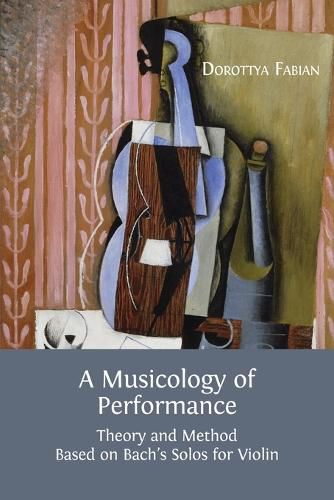Readings Newsletter
Become a Readings Member to make your shopping experience even easier.
Sign in or sign up for free!
You’re not far away from qualifying for FREE standard shipping within Australia
You’ve qualified for FREE standard shipping within Australia
The cart is loading…






This title is printed to order. This book may have been self-published. If so, we cannot guarantee the quality of the content. In the main most books will have gone through the editing process however some may not. We therefore suggest that you be aware of this before ordering this book. If in doubt check either the author or publisher’s details as we are unable to accept any returns unless they are faulty. Please contact us if you have any questions.
The nature of musical performance has intrigued researchers for a long time. This book explores the contributions and limitations of some of these approaches, be it theoretical, cultural, historical, perceptual, or analytical. Through a detailed investigation of recent recordings of J. S. Bach’s 6 Sonatas and Partitas for Solo Violin it demonstrates that music performance functions as complex dynamical systems. As such only a transdisciplinary approach to analysis is able to verbalize the aural experience. The book provides a model for such a method by adopting Deleuzian concepts and various empirical and interdisciplinary procedures, from the cultural-historical to the perceptual-phenomenological. The focus is always on the detail in context, the relative contribution of the interacting elements creating the holistic experience. A Musicology of Performance also considers a crucial but under-researched element in virtually all studies of performance, namely, the ways in which performers learn from one another and develop their own micro-traditions. The repertoire analyzed in this book demonstrates the reliability of the analytical method, providing evidence for the proposed theoretical model, while presenting new insights into the state of baroque performance practice at the turn of the twenty-first century. The book contains a wealth of audio examples, tables and graphs to better map the interaction between historically informed and mainstream performance styles considered in relation to broader cultural trends, violin schools and individual artistic trajectories. A Musicology of Performance is a must read for academics and post-graduate students and an essential reference point for the study of music performance, the early music movement, and Bach’s opus.
$9.00 standard shipping within Australia
FREE standard shipping within Australia for orders over $100.00
Express & International shipping calculated at checkout
This title is printed to order. This book may have been self-published. If so, we cannot guarantee the quality of the content. In the main most books will have gone through the editing process however some may not. We therefore suggest that you be aware of this before ordering this book. If in doubt check either the author or publisher’s details as we are unable to accept any returns unless they are faulty. Please contact us if you have any questions.
The nature of musical performance has intrigued researchers for a long time. This book explores the contributions and limitations of some of these approaches, be it theoretical, cultural, historical, perceptual, or analytical. Through a detailed investigation of recent recordings of J. S. Bach’s 6 Sonatas and Partitas for Solo Violin it demonstrates that music performance functions as complex dynamical systems. As such only a transdisciplinary approach to analysis is able to verbalize the aural experience. The book provides a model for such a method by adopting Deleuzian concepts and various empirical and interdisciplinary procedures, from the cultural-historical to the perceptual-phenomenological. The focus is always on the detail in context, the relative contribution of the interacting elements creating the holistic experience. A Musicology of Performance also considers a crucial but under-researched element in virtually all studies of performance, namely, the ways in which performers learn from one another and develop their own micro-traditions. The repertoire analyzed in this book demonstrates the reliability of the analytical method, providing evidence for the proposed theoretical model, while presenting new insights into the state of baroque performance practice at the turn of the twenty-first century. The book contains a wealth of audio examples, tables and graphs to better map the interaction between historically informed and mainstream performance styles considered in relation to broader cultural trends, violin schools and individual artistic trajectories. A Musicology of Performance is a must read for academics and post-graduate students and an essential reference point for the study of music performance, the early music movement, and Bach’s opus.